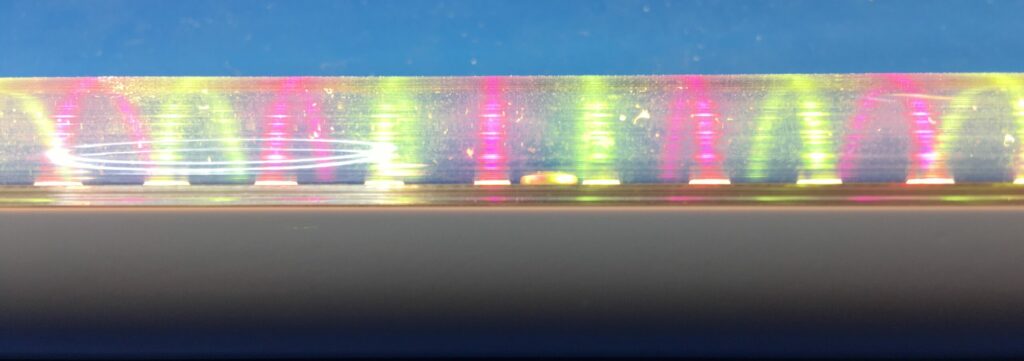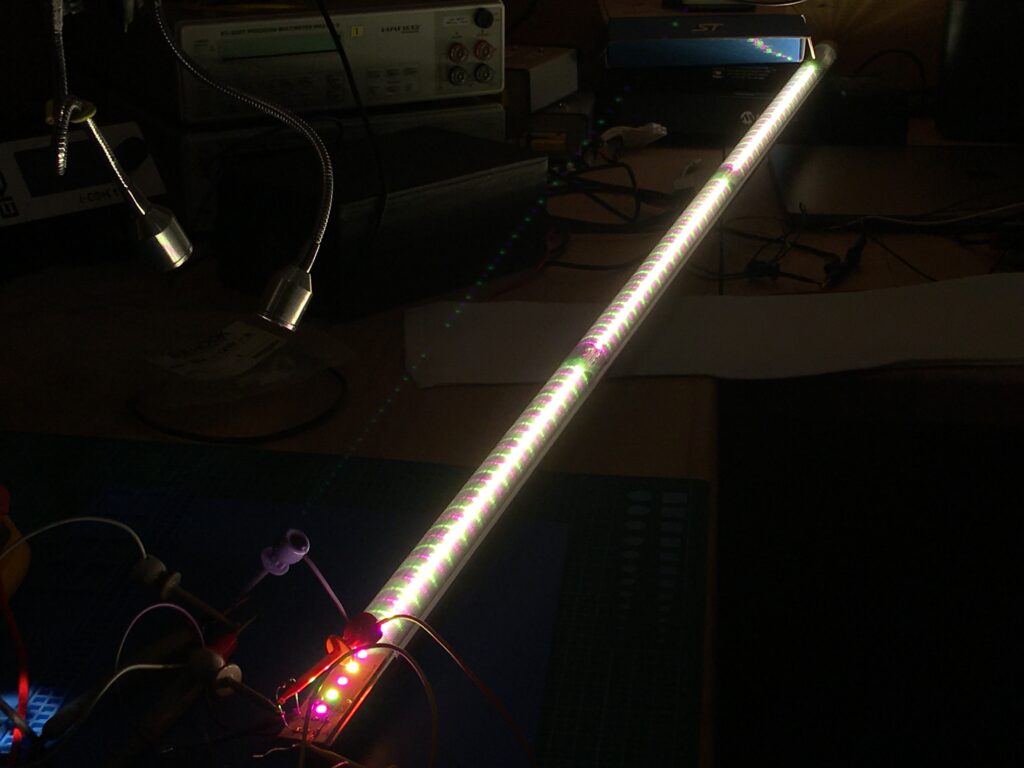Growing plants indoors is about light and water management. This article shares some thought on the LED Grow Light design calculations.
There are many suppliers offering horticulture LEDs. We have decided to use one of the leading brands Luxeon SunPlus LEDs. We knew that the LEDs should be kept as cool as possible. Our design uses Aluclad PCB, which conducts heat well. The PCB design is simple placing LEDs in series, but we recommend to follow the LED manufacturer’s guide lines.
The horticulture experts selected the LED type to be used and asked the we assemble them by alternating colors.

Our goal was to build 1200 mm long LED tube with power about 25W. We were able to pack in 108 LEDs. Their datasheet lists as the maximum current 240mA. Half of that, 120mA was listed as a common current for long term use. We elected to use even lower current of 75mA, because our corporate slogan promises product longetivity and we wanted it to last ‘forever’. Since each LED voltage is about 2.8V, a quick calculation of the resulting power is:
LEDpower = 108 * 2.8 [V] * 0.075 [A] = 22.68 [W]
(approximate tube power)
The next design decision was what current and voltage buck AC/DC converter to use. 108 LEDs in series with 2.8V each would require high voltage of 300VDC, which is not practical. We split them into two groups. The design uses two parallel chains of 54 LEDs in series, which only needs 150VDC – no problem to do if the AC voltage is 230VAC like we have in Europe. For the american market we will have to connect them differently, but that is not our objective yet.
Next was the converter current question: because we wish to run 75mA through each LED and we have two chains in parallel, we need to generate 150mA for both chains. The AC/DC converter specifications are therefore 230VAC input voltage, to be able handle 25W and to generate 150mA.

The first prototypes were assembled by hand. It was great to see it lit 🙂 The next task is to properly measure the LED chip temperature. For that we ordered T-type thermocouple wire and matching connectors. As soon as they arrive we will do another blog entry.

